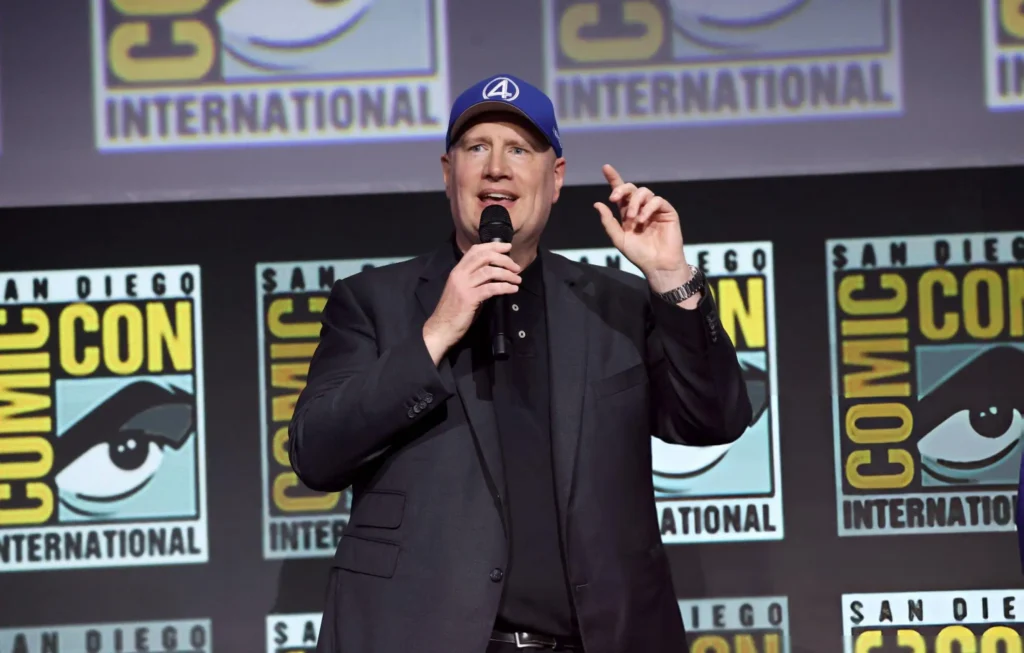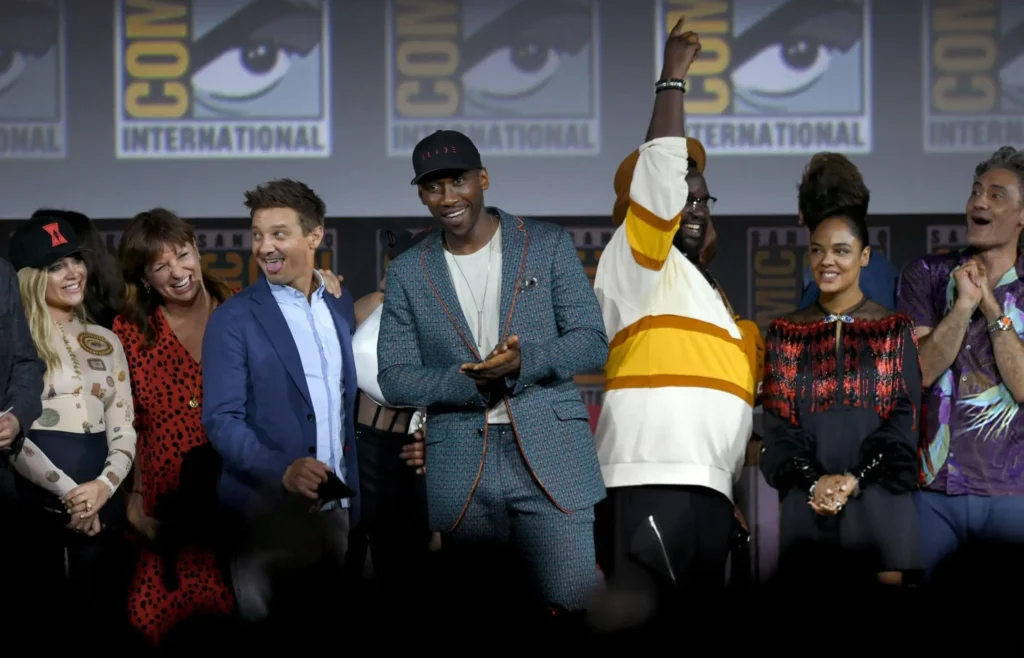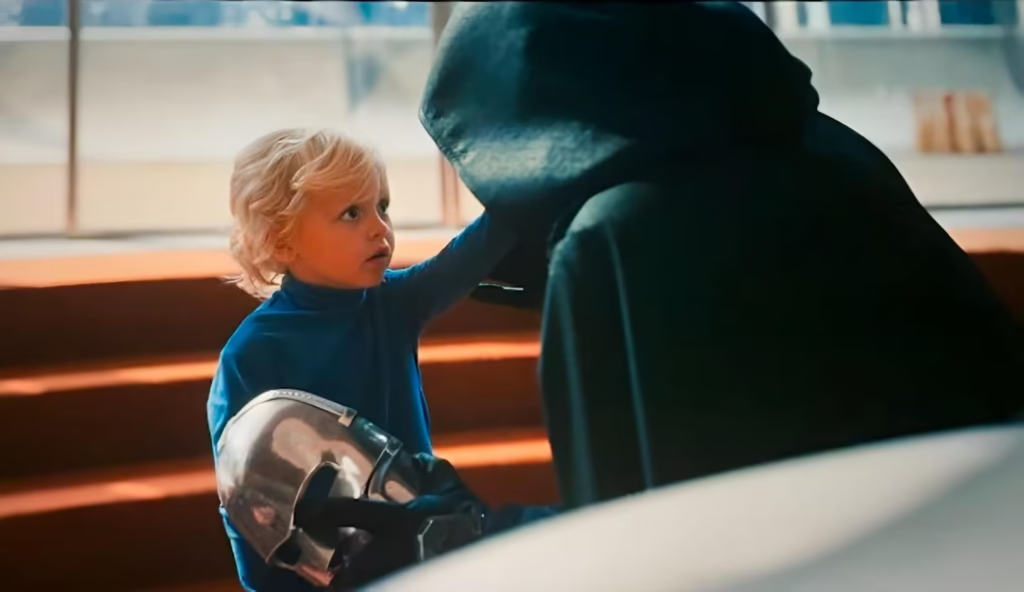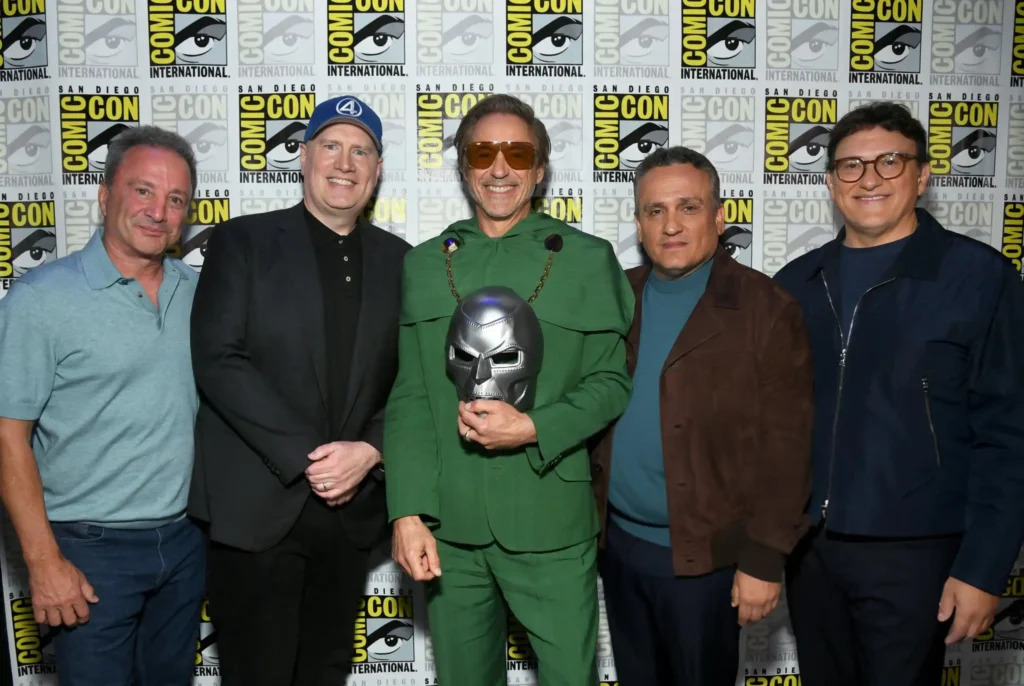The launch of Marvel’s Phase 6 with The Fantastic Four: First Steps should have been a triumphant moment. Instead, it revealed the depths of Marvel Studios’ production chaos that threatens to derail the entire Marvel Cinematic Universe. While fans celebrated the return of Marvel’s first family, behind-the-scenes revelations expose a studio grappling with communication breakdowns, budget crises, and creative dysfunction that makes even their successes feel accidental.
Phase 4 and Phase 5 were undeniable disasters. The Disney Plus series overload, constant character introductions, villain changes mid-saga, and the writers’ strike created a perfect storm of mediocrity. But the real shock? These problems haven’t been fixed. They’ve gotten worse.
Is Marvel Studios Actually Getting Worse Despite Phase 6 Success?
The answer is more complicated than you might think. The Fantastic Four: First Steps delivered everything fans wanted – great performances, stunning visuals, and that classic Marvel charm. It proved Marvel can still make excellent superhero movies when everything aligns properly.
But here’s what’s really happening behind the scenes: Marvel is succeeding despite their broken system, not because they’ve fixed it. The studio’s fundamental approach to filmmaking has become so chaotic that even their wins feel like lucky accidents rather than strategic victories.
Think about it this way – when audiences criticized the DCEU for lacking Kevin Feige’s “big brain management,” nobody expected that same management to become Marvel’s biggest weakness. Yet that’s exactly what happened. The collaborative approach that built the Infinity Saga has been replaced by a system where directors work in isolation, unaware of what their colleagues are creating.

What’s Really Behind Marvel’s Communication Breakdown?
The most shocking revelation isn’t about budgets or box office numbers – it’s about basic communication failures. Directors are literally making movies without knowing what happens in related films. This isn’t creative independence; it’s production chaos.
Take the Thunderbolts and Fantastic Four connection disaster. Jake Schreier, director of Thunderbolts, admitted that his post-credits scene was shot by the Russo Brothers, not him. Matt Shakman, who directed The Fantastic Four: First Steps, revealed his mid-credits scene was also shot by the Russo Brothers. When asked why his scene didn’t connect to Thunderbolts’ ending, Shakman’s response was devastating: he had no idea what was planned because Thunderbolts’ post-credits scene didn’t exist when he was writing his script.

This is filmmaking 101 – if two movies are supposed to connect, their directors should at least talk to each other. Instead, Marvel has created a system where the Russo Brothers are apparently directing everyone’s post-credits scenes while individual directors remain completely in the dark about the larger narrative.
But the communication problems go deeper. During the golden Phase 3 era, Marvel famously brought all their directors and writers together for massive collaboration sessions. They shared ideas, created collective plots, and went through multiple drafts with input from every creative voice. That collaborative spirit? It’s completely gone from the Multiverse Saga.
Why Are Marvel Scripts Never Actually Finished?
Marvel’s script completion crisis represents their most dangerous production habit. The studio has always announced projects before scripts were ready, but the expanded roster post-Infinity Saga has turned this approach into a disaster.
During the first three phases, the linear storytelling and smaller character roster made last-minute changes manageable. Now? Marvel’s announcement-first, script-later approach has created a development nightmare where major projects sit in limbo for years or rush into production with incomplete stories.
Blade stands as the most embarrassing example. Announced as Marvel’s biggest post-Endgame project, it’s been trapped in development hell for six years. Multiple directors have walked away, writers have been fired, and the project has been completely scrapped and restarted multiple times. The current situation? They still don’t have a workable script.

Even completed scripts aren’t safe. Marvel’s habit of making massive changes during production has created the “creative differences” epidemic that’s driven away talent like Scott Derrickson from Doctor Strange in the Multiverse of Madness. The studio starts shooting with first drafts, then makes changes on set, leading to either massive delays or extensive reshoots.
The most alarming current example? Avengers: Doomsday. Rebecca Romijn, who plays Mystique in the film, recently revealed that the script is still being written during production. Compare this to Infinity War and Endgame, where preproduction was completed two years before release. Marvel knew exactly what those movies would look like in 2016. For a film releasing next year, they’re still figuring out the story.
How Much Damage Are Reshoots Really Causing?
Reshoots have become Marvel’s most expensive problem, and their impact goes far beyond budget overruns. When the final product differs completely from the original concept, you know something is fundamentally broken in the development process.
The reshoot epidemic has created Phase 5’s commercial disasters. Movies like Captain America: Brave New World and The Fantastic Four: First Steps both underwent massive changes that are visible in the final product. You can actually see where original footage ends and reshoot material begins because the pacing becomes completely different.
Here’s how you identify reshoot damage: the movie feels like it was originally planned as something else, important plot points are never properly addressed, and the story feels rushed toward an ending that doesn’t quite fit. These are all symptoms of a production that was fundamentally reconstructed in post-production.
The budget impact is staggering. Doctor Strange in the Multiverse of Madness reached $444 million – an astronomical budget for a solo character film. The majority of that cost increase came from reshoots that essentially rebuilt the entire movie. For context, that’s more than many studios spend on their biggest blockbusters.
The real danger? This approach makes it impossible to create a cohesive shared universe. When every movie is being rewritten during production, maintaining narrative connections becomes impossible. The result is the disconnected feeling that’s plagued the Multiverse Saga from the beginning.
Could Avengers Movies Actually Disappear After Phase 6?
The uncomfortable truth is that budget realities may force Marvel to abandon their signature team-up format. The mathematical problem is simple: the MCU roster has grown so large that assembling all major characters in one film would create an unaffordable budget.
During the Infinity Saga, every character from each phase appeared in the Avengers finale. But calculating what that would cost today with the expanded roster reveals why Marvel has already broken this pattern. The star power alone would push budgets to unprecedented levels that no studio would risk, especially with Marvel’s recent commercial struggles.
Marvel has already made the decision to separate movie and series characters to control costs. Disney Plus characters won’t appear in theatrical releases because Marvel literally cannot afford to pay those actors’ theatrical rates. This represents a fundamental limitation that didn’t exist during the original Avengers era.
Recent reports reveal Marvel executives meeting with The Creator’s VFX team to learn cost-cutting techniques. This is the studio that previously had unlimited budgets now desperately seeking ways to reduce visual effects costs. That shift represents a fundamental change in Marvel’s operational reality.
The roster expansion problem only gets worse over time. After the Multiverse Saga, Marvel plans to introduce mutants, Defenders, and Midnight Sons storylines. Each expansion makes future Avengers movies mathematically more difficult to produce within reasonable budgets.
Looking at the complete cast lists for Avengers: Doomsday and Secret Wars reveals budgets that likely exceed anything Marvel has ever attempted. As the roster continues growing, the economics simply don’t support the traditional Avengers format that defined the MCU’s identity.
What Do Rising Budgets Mean for Marvel’s Future?
The budget crisis extends beyond individual films to threaten Marvel’s entire business model. When tentpole productions regularly exceed $400 million and still lose money, the studio faces an unsustainable trajectory that forces dramatic operational changes.
Is There Actually Hope for Marvel’s Recovery?
Despite the production chaos, Marvel retains significant advantages that could enable a successful turnaround. The upcoming Spider-Man: Brand New Day and Avengers: Doomsday still generate massive fan excitement, proving audience appetite for quality Marvel content remains strong.

Recent successes like Thunderbolts and The Fantastic Four: First Steps demonstrate that Marvel can still deliver excellent entertainment when production issues don’t derail the creative process. The studio’s fundamental understanding of character development and spectacle hasn’t disappeared – it’s just been overshadowed by systematic production problems.
Marvel’s biggest advantage might be their willingness to acknowledge problems. Kevin Feige’s recent admissions about overproduction and quality issues represent the kind of self-awareness that enabled the studio’s original success. If they can actually implement solutions rather than just identifying problems, the foundation for recovery exists.
The post-Multiverse Saga planning also offers opportunities to reset with lessons learned. Moving toward mutants, Defenders, and supernatural storylines provides creative fresh starts that could recapture the excitement of early MCU phases without the baggage of current continuity problems.
How Does Marvel’s Approach Compare to DC’s New Strategy?
The contrast with James Gunn’s DC approach is stark and instructive. While Marvel announces projects years before scripts exist, Gunn has implemented a “script-first” policy where projects only get greenlit with completed, polished screenplays. This fundamental difference in development philosophy explains why DC’s recent Superman generated more excitement than most Marvel announcements.
Gunn’s emphasis on director autonomy within a planned framework represents exactly what made early Marvel successful. The collaborative approach that built Phase 3’s success has become DC’s competitive advantage while Marvel has abandoned it for a more controlling, centralized system.
The irony is profound: Marvel created the blueprint for successful shared universe filmmaking, then abandoned that blueprint just as their competition adopted it. DC’s current trajectory suggests Marvel’s original approach remains viable – they just need to remember how to implement it.
What Should Marvel Do to Fix These Problems?
The solution requires fundamental changes to Marvel’s production philosophy, not just surface-level adjustments. First, they need to return to the collaborative approach that built the Infinity Saga’s success. Directors and writers should work together from the beginning, not discover each other’s work through finished films.
Script completion before production must become non-negotiable. The announce-first, write-later approach has created too many expensive disasters to continue. Marvel needs to accept longer development cycles in exchange for better-prepared productions.
Budget discipline has to extend beyond just spending less money. The reshoot culture needs to end, which means investing more time in preproduction to avoid expensive fixes later. Better planning prevents the need for reconstruction.
Most importantly, Marvel needs to rediscover what made their early success possible: trusting creative talent within a planned framework. The micromanagement approach that’s driven away directors needs to be replaced with the collaborative spirit that attracted talent like the Russo Brothers, Ryan Coogler, and Taika Waititi in the first place. The MCU’s future depends on whether Marvel can implement these changes while maintaining the ambitious scope that made them the entertainment industry’s most successful franchise. The foundation for recovery exists – the question is whether they’ll build on it or continue down the current path toward creative and commercial irrelevance.

